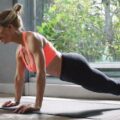Introduction to the Tricep Kickback
The tricep kickback is a fantastic exercise for toning and strengthening the back of your upper arms. But beyond just sculpting your physique, mastering this movement can boost your confidence and overall sense of wellbeing. Let’s explore how to perfect your tricep kickback with compassion and mindfulness, focusing on the mind-body connection rather than just physical gains.
Understanding the Tricep Muscle
Before we dive into the exercise, let’s take a moment to appreciate the tricep muscle. This three-headed muscle at the back of your upper arm plays a crucial role in many daily activities, from pushing open doors to lifting objects. By strengthening your triceps, you’re not just working towards aesthetic goals – you’re enhancing your functional strength and making everyday tasks easier.
The tricep kickback targets all three heads of the tricep muscle:
- The long head
- The lateral head
- The medial head
By engaging all three heads, you’re promoting balanced muscle development and reducing the risk of imbalances that could lead to discomfort or injury.
Perfecting Your Form with Mindfulness
Now, let’s focus on the tricep kickback itself. Rather than rushing through the movement, approach it with mindfulness and intention. Here’s how to perform the exercise with proper form:
- Start by standing with your feet hip-width apart, knees slightly bent.
- Hinge forward at the hips, keeping your back straight and core engaged.
- Hold a dumbbell in each hand, arms close to your sides.
- Keeping your upper arms stationary, slowly extend your forearms behind you.
- Pause briefly at the top of the movement, focusing on the contraction in your triceps.
- Slowly lower the weights back to the starting position.
As you perform each rep, focus on your breath. Inhale as you lower the weights, and exhale as you extend your arms. This mindful breathing can help you stay present and connected to your body throughout the exercise.
Listening to Your Body
While it’s important to challenge yourself, it’s equally crucial to listen to your body and respect its limits. If you feel any pain or discomfort during the exercise, pause and reassess your form. It’s okay to use lighter weights or perform fewer repetitions – what matters most is that you’re moving in a way that feels good for your body.
Remember, progress is not linear. Some days you might feel stronger than others, and that’s perfectly normal. Approach each workout with self-compassion, acknowledging that your body’s needs may vary from day to day.
Incorporating Tricep Kickbacks into Your Routine
As you become more comfortable with the tricep kickback, you can incorporate it into your fitness routine in various ways:
- Add it to your upper body or arm-focused workouts
- Use it as part of a full-body circuit training session
- Perform a few sets during quick workout breaks throughout your day
The key is to find a way to include tricep kickbacks that feels sustainable and enjoyable for you. Remember, consistency is more important than intensity when it comes to seeing long-term results.
Beyond the Physical: Mental Benefits of Strength Training
While the physical benefits of exercises like the tricep kickback are well-known, it’s worth highlighting the mental and emotional benefits as well. Strength training can:
- Boost self-confidence and body image
- Reduce symptoms of anxiety and depression
- Improve sleep quality
- Enhance overall mood and well-being
As you work on perfecting your tricep kickback, take time to notice these non-physical benefits. How do you feel after a workout? Do you notice any changes in your mood or energy levels? Celebrating these holistic improvements can help maintain your motivation and foster a positive relationship with exercise.
FAQ: Perfecting Your Tricep Kickback
1. How many sets and reps of tricep kickbacks should I do?
Start with 2-3 sets of 10-12 repetitions. As you build strength, you can increase to 3-4 sets of 12-15 reps. Remember, it’s more important to maintain proper form than to increase volume too quickly.
2. Can I do tricep kickbacks without weights?
Absolutely! You can use resistance bands instead of dumbbells, or even perform the movement without any equipment, focusing on the mind-muscle connection and squeezing your triceps at the top of the movement.
3. How often should I incorporate tricep kickbacks into my routine?
Aim to include tricep kickbacks in your routine 2-3 times per week, allowing at least one day of rest between sessions to give your muscles time to recover and grow stronger.
4. I feel the exercise more in my shoulders than my triceps. What am I doing wrong?
You might be lifting your upper arms as you extend your forearms. Focus on keeping your upper arms still and close to your body throughout the movement. If needed, reduce the weight until you can maintain proper form.
5. Can tricep kickbacks help with everyday activities?
Yes! Stronger triceps can make many daily activities easier, such as pushing doors, lifting objects, or even getting up from a seated position. By improving your functional strength, you’re enhancing your overall quality of life.
Remember, perfecting your tricep kickback is a journey, not a destination. Approach each workout with patience, self-compassion, and a focus on how the exercise makes you feel, both physically and mentally. By cultivating mindfulness in your strength training practice, you’re not just building stronger arms – you’re fostering a deeper connection with your body and enhancing your overall well-being.









